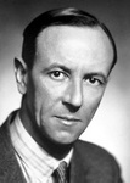
You are using a browser not supported by the Wolfram Cloud
Supported browsers include recent versions of Chrome, Edge, Firefox and Safari.
I understand and wish to continue anyway »
 |
Pioneered the field of quantum computing; also known for his work in particle physics, quantum mechanics, and electrodynamicsCalled the "Great Explainer," he became one of the world's best-known scientists through his popular physics books and lecturesParticipated in the creation of the atomic bomb, developing with Hans Bethe a formula for calculating the yield of a fission bombIntroduced the concept of nanotechnology in a 1959 lectureMember of the panel that investigated the Space Shuttle Challenger disasterHeld the Richard Chace Tolman professorship in theoretical physics at the California Institute of Technology |

 |
Physicist who discovered the neutronMain British scientist to be involved in the Manhattan Project to develop the atomic bombMade possible the fission of uranium 235 and the laboratory creation of elements heavier than uranium |



You are using a browser not supported by the Wolfram Cloud
Supported browsers include recent versions of Chrome, Edge, Firefox and Safari.
I understand and wish to continue anyway »